- Clone
- HIB19 (See other available formats)
- Regulatory Status
- RUO
- Workshop
- V CD19.11
- Other Names
- B4
- Isotype
- Mouse IgG1, κ
- Ave. Rating
- Submit a Review
- Product Citations
- publications
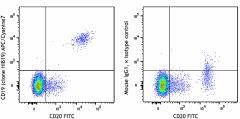
-

Human peripheral blood lymphocytes were stained with CD20 FITC and CD19 (clone HIB19) APC/Cyanine7 (left) or Mouse IgG1, κ isotype control (right)
| Cat # | Size | Price | Quantity Check Availability | Save | ||
|---|---|---|---|---|---|---|
| 302217 | 25 tests | 123€ | ||||
| 302218 | 100 tests | 249€ | ||||
CD19 is a 95 kD type I transmembrane glycoprotein also known as B4. It is a member of the immunoglobulin superfamily expressed on B-cells (from pro-B to blastoid B cells, absent on plasma cells) and follicular dendritic cells. CD19 is involved in B cell development, activation, and differentiation. CD19 forms a complex with CD21 (CR2) and CD81 (TAPA-1), and functions as a BCR co-receptor.
Product DetailsProduct Details
- Reactivity
- Human
- Antibody Type
- Monoclonal
- Host Species
- Mouse
- Formulation
- Phosphate-buffered solution, pH 7.2, containing 0.09% sodium azide and BSA (origin USA)
- Preparation
- The antibody was purified by affinity chromatography, and conjugated with APC/Cyanine7 under optimal conditions.
- Concentration
- Lot-specific (to obtain lot-specific concentration and expiration, please enter the lot number in our Certificate of Analysis online tool.)
- Storage & Handling
- The CD19 antibody solution should be stored undiluted between 2°C and 8°C, and protected from prolonged exposure to light. Do not freeze.
- Application
-
FC - Quality tested
- Recommended Usage
-
Each lot of this antibody is quality control tested by immunofluorescent staining with flow cytometric analysis. For flow cytometric staining, the suggested use of this reagent is 5 µl per million cells in 100 µl staining volume or 5 µl per 100 µl of whole blood.
- Excitation Laser
-
Red Laser (633 nm)
- Application Notes
-
Additional reported applications (for the relevant formats) include: immunohistochemical staining of acetone-fixed frozen tissue sections8 and blocking of B cell proliferation. Clone HIB19 is not recommended for formalin-fixed paraffin-embedded sections. The Ultra-LEAF™ purified antibody (Endotoxin < 0.01 EU/µg, Azide-Free, 0.2 µm filtered) is recommended for functional assays (Cat. No. 302267 & 302268).
Clone HIB19 partially blocks anti-human CD19 clones 4G7 and SJ25C1 staining based on in-house testing
- Additional Product Notes
-
BioLegend is in the process of converting the name APC/Cy7 to APC/Cyanine7. The dye molecule remains the same, so you should expect the same quality and performance from our APC/Cyanine7 products. Please contact Technical Service if you have any questions.
- Application References
-
- Schlossman S, et al. 1995. Leucocyte Typing V. Oxford University Press. New York.
- Knapp W, et al. 1989. Leucocyte Typing IV. Oxford University Press. New York.
- Bradbury L, et al. 1993. J. Immunol. 151:2915.
- Joseph A, et al. 2010. J. Virol. 84:6645. PubMed
- Wang X, et al. 2010. Haematologica. 95:884. (FC) PubMed
- Walker JD, et al. 2009. J. Immunol. 182:1548. (Block) PubMed
- Yoshino N, et al. 2000. Exp. Anim. (Tokyo) 49:97. (FC)
- Hansen A, et al. 2002. Arthritis Rheum. 46:2160. (IHC)
- Stoeckius M, et al. 2017. Nat. Methods. 14:865. (PG)
- Peterson VM, et al. 2017. Nat. Biotechnol. 35:936. (PG)
- Product Citations
- RRID
-
AB_314247 (BioLegend Cat. No. 302217)
AB_314248 (BioLegend Cat. No. 302218)
Antigen Details
- Structure
- Ig superfamily, type I transmembrane glycoprotein, 95 kD
- Distribution
-
B lineage (except plasma cells), follicular dendritic cells
- Function
- B cell activation and differentiation
- Ligand/Receptor
- Forms complex with CD21 (CR2) and CD81 (TAPA-1), BCR coreceptor
- Cell Type
- B cells, Dendritic cells
- Biology Area
- Costimulatory Molecules, Immunology
- Molecular Family
- CD Molecules
- Antigen References
-
1. Tedder T, et al. 1994. Immunol. Today 15:437.
2. Bradbury L, et al. 1993. J. Immunol. 151:2915. - Gene ID
- 930 View all products for this Gene ID
- UniProt
- View information about CD19 on UniProt.org
Related FAQs
Customers Also Purchased
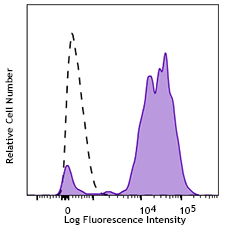
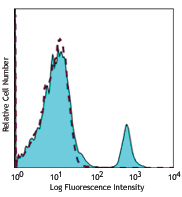
Compare Data Across All Formats
This data display is provided for general comparisons between formats.
Your actual data may vary due to variations in samples, target cells, instruments and their settings, staining conditions, and other factors.
If you need assistance with selecting the best format contact our expert technical support team.
 Login / Register
Login / Register 










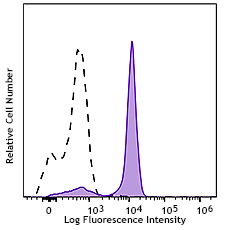
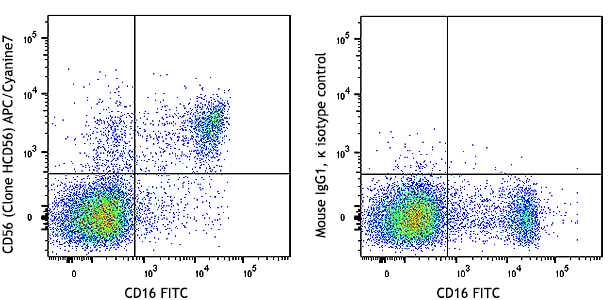



Follow Us